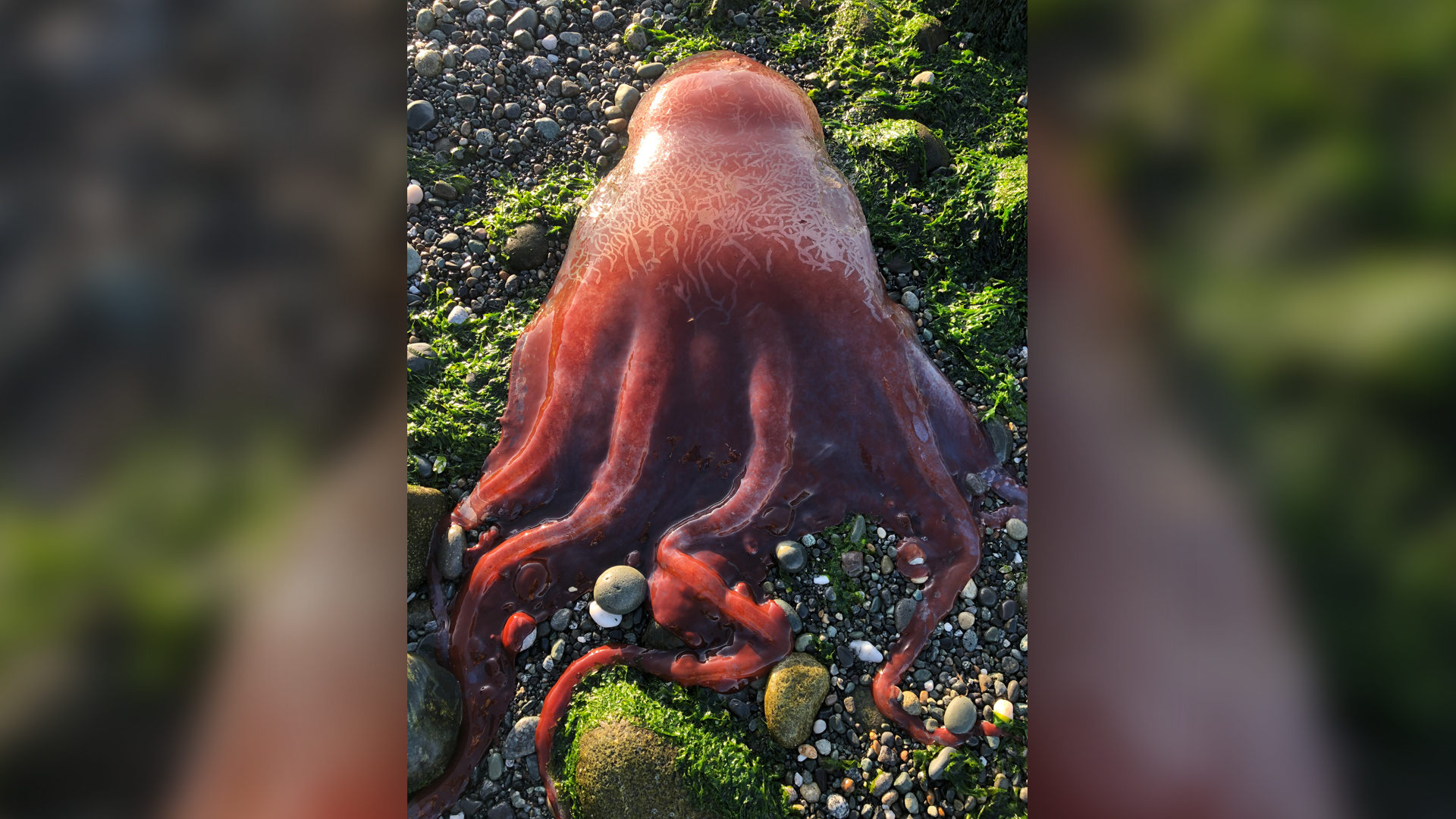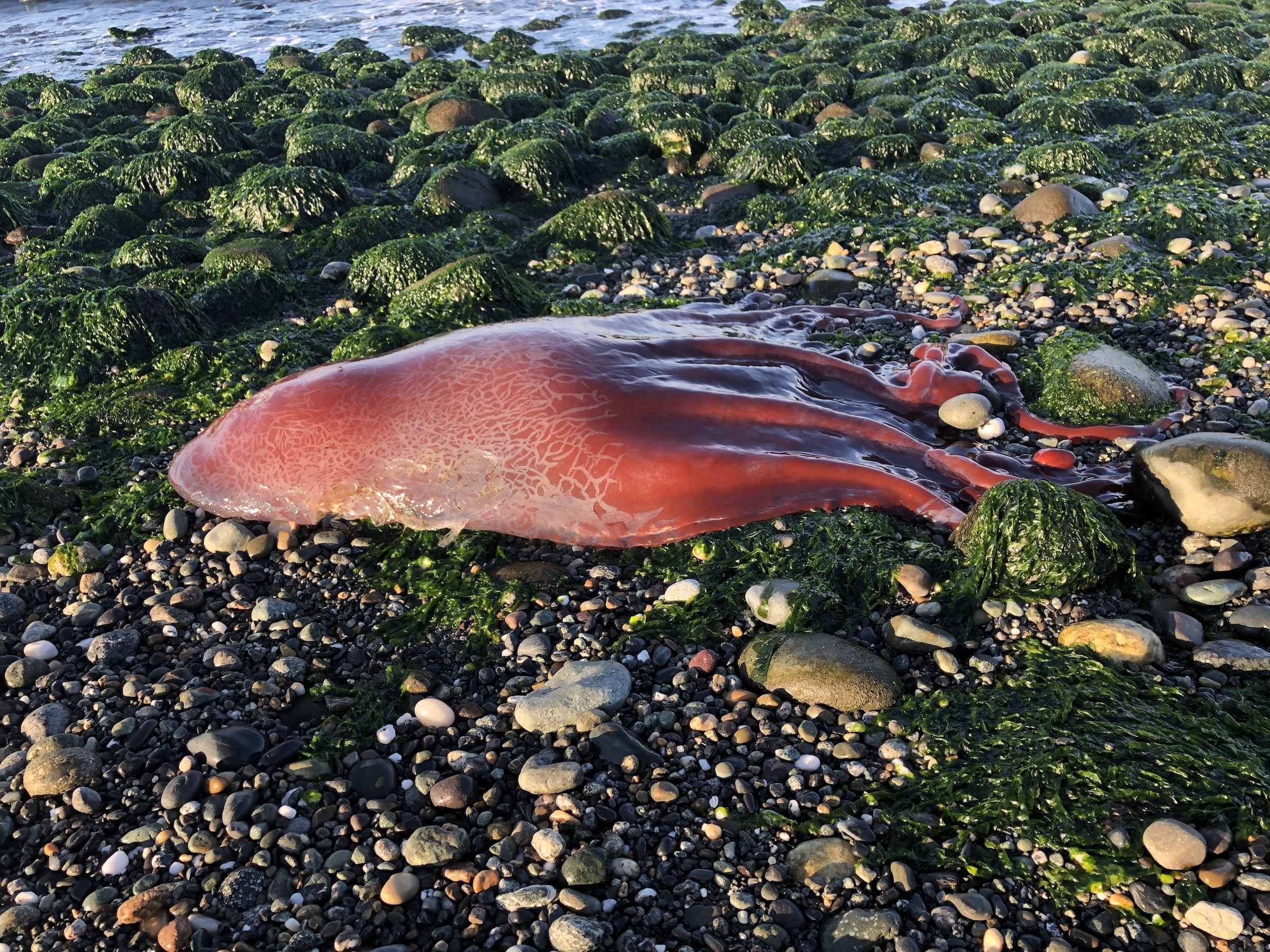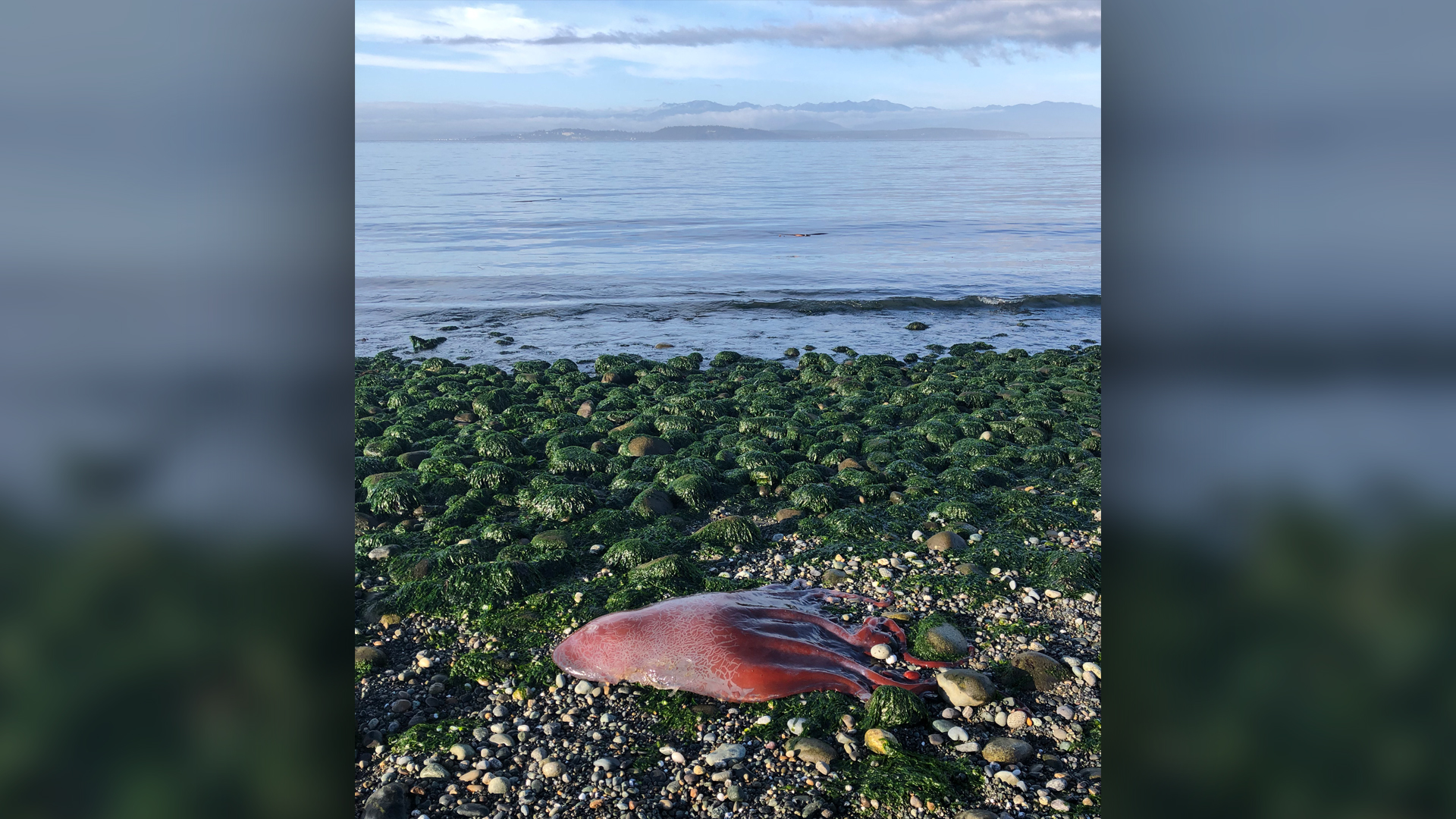Bright 'red glob' washes ashore in Washington. It may be a 7-armed octopus.
"It was a brilliant red in the low morning light."

A mysterious, many-armed sea creature — initially described as a large "red glob" — lying on a rocky shore in Washington has drawn in cephalopod experts across the country, each wondering what this gelatinous animal is.
The 3.5-foot-long (1 meter) beast's identity was at first elusive; was it the shallow-water East Pacific red octopus (Octopus rubescens)? Or perhaps it was a very lost deep-sea vampire squid (Vampyroteuthis infernalis) or a deep-sea dumbo octopus (Grimpoteuthis)?
The likely answers (no, no and no) led scientists to yet another species: the seven-armed octopus (Haliphron atlanticus), a deep-water creature that is rarely seen as far north as Washington, according to the Whidbey News-Times.
Related: In photos: Amazing 'octomom' protects eggs for 4.5 years
Ron Newberry, a resident of Whidbey Island, north of Seattle in Puget Sound, discovered the weird creature before going salmon fishing the morning of Aug. 29. The tide was low, exposing algae-covered rocks. "And there it was, this red glob of something with what appeared to be tentacles," Newberry told Live Science in an email. The red beast was dead, he realized. But Newberry still snapped a few photos and uploaded them to the Facebook and Instagram accounts of Whidbey Camano Land Trust, a nonprofit nature conservation organization, where Newberry serves as communications manager. Later, the tide came in and carried the animal's body back into Puget Sound.

The social media posts went viral, with the Facebook post reaching 21,000 people within days. A series of experts from the Seattle Aquarium, University of Washington, National Oceanic and Atmospheric Administration and Smithsonian Institution in Washington, D.C. weighed in and offered ideas about the creature's identity, but most agreed that it was a seven-armed octopus, Newberry said.
"According to a college professor from Walla Walla University [in eastern Washington], he didn't know of any records of such an octopus found in the Puget Sound area or Washington state," Newberry said.
Sign up for the Live Science daily newsletter now
Get the world’s most fascinating discoveries delivered straight to your inbox.

The seven-armed octopus is an animal of "least concern," meaning it's not considered to be threatened, according to the International Union for Conservation of Nature (IUCN). However, its population size is unknown; and scientists know little about its habitat. Submersibles have recorded the species swimming in the deep sea, and bottom trawl fishing vessels have taken in large adults, the IUCN reported.
However, scientists do know its dining preferences. Remotely operated vehicles (ROVs) off the coasts of California and Hawaii have captured footage of giant, deep-sea H. atlanticus octopuses holding jellyfish, including the so-called egg-yolk jelly (Phacellophora camtschatica), in their arms, and stomach-content analyses of these octopuses confirmed that they chowed down on jellyfish, according to a 2017 study in the journal Scientific Reports.
H. atlanticus females are much larger than males, making the species one of the "strongest examples of sexual size dimorphism among cephalopods," according to that study. The male's head (known as the mantle) is only about 4 inches (10 centimeters) long, while the female's is about 27 inches (69 cm) long, the IUCN reported.
Related: In photos: Spooky deep-sea creatures
And, despite its intriguing name, the octopus doesn't have just seven arms. In males, the eighth arm is positioned in a sac next to the right eye, and the male takes it out when transferring sperm to potential mates. "Therefore it appears to have only seven arms, giving it the common name of the seven-arm octopus," according to the Scientific Reports study.
While some experts wish that Newberry had taken a slice of the creature so its DNA could be analyzed, he demurred. "it's not something I would do," he said. "I like to leave nature be."
Originally published on Live Science.

Laura is the archaeology and Life's Little Mysteries editor at Live Science. She also reports on general science, including paleontology. Her work has appeared in The New York Times, Scholastic, Popular Science and Spectrum, a site on autism research. She has won multiple awards from the Society of Professional Journalists and the Washington Newspaper Publishers Association for her reporting at a weekly newspaper near Seattle. Laura holds a bachelor's degree in English literature and psychology from Washington University in St. Louis and a master's degree in science writing from NYU.










